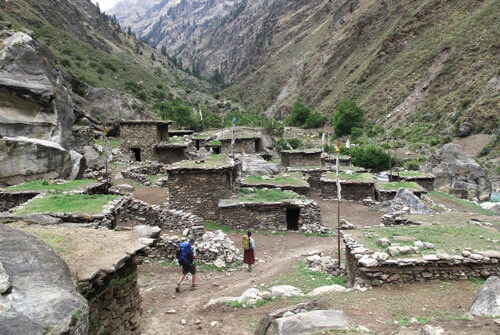Kathmandu Among the Top 10 Travel Destinations
Kathmandu Among the Top 10 Travel Destinations of 2019:
Lonely Planet lists Kathmandu, ‘The City of Temples’ of Nepal as one of the world’s top 10 travel destinations for 2019. Competing among thousands of travel destinations, Kathmandu made it to the 5th top travel destination for 2019 in the world. Positioned at the foothills of the high Himalayas and vibrant hills Kathmandu, the capital city of Nepal is simply phenomenal. Kathmandu, the ‘Glory of Nepal’ is illustrated by seven UNESCO-listed world heritage sites that include –
- The Buddhist Stupas of Boudhanath and Swayambhunath.
- The ancient Hindu temples of Pashupatinath and Changu-Narayan.
- The Durbar Squares of Kathmandu, Patan, and Bhaktapur.
All these Heritage Sites are our landmark that has so much to do with Nepal’s historical and cultural significance. Kathmandu's World Heritage site takes anyone into the realm of an authentic spiritual eco-sphere that is away from the world.
The vibrant luscious hills surround this graceful city of Kathmandu situated at an elevation of 1400 m. The city has so much to offer to both national and international tourists in terms of history, culture, and architecture. In 2013 Kathmandu made it to the 3rd top travel destination in the world. The legend speaks of Kathmandu being a huge lake and Swyambhunath temple (also known as Monkey Temple) being an island with an eternal flame.
Manjushri, the Bodhisattva – the god of wisdom in the want to visit the flame cut the gorge of Chobar situated southwest of Kathmandu with his sword and drained the lake. He then built a shrine which is now the UNESCO listed world Heritage site.
The 7 World Heritages sites:
PASHUPATINATH TEMPLE:
Equivalent to Varanasi in India on the sacred River Ganges, Pashupatinath situated at the bank of the sacred river Bagmati happens to be one of the most famous pilgrimage sites of the Hindu faith. There are various legends that link to this temple which is mesmerizing. Hindus and Buddhists from around the world visit the temple every year to pay homage to Lord Shiva, the Hindu's highest divinity.
During the Maha-Shivaratri festival that falls around February/March thousands of devotees from around the world including locals come to honor Lord Shiv. However, this is when Pashupatinath is livelier than any other special occasion. Besides, the festival of Teej, observed by the Nepal women is another occurrence of significance that is passionately celebrated. It’s a temple where anyone can witness a traditional cremation which is a daily activity yet the serenity is impressive.
BOUDHANATH STUPA:
Boudhanath, stand 8 km from the center of Kathmandu and happens to be one of the largest Buddhist stupa in the world. There are too many legends to speak of in regard to the foundation of this stupa. Also known as the Stupa of Enlightenment, Boudhanath is a very significant monument for Buddhists. This Heritage site has an exceptional charm of its own that has always persuaded anyone to have faith in its power of serenity.
KATHMANDU DURBAR SQUARE
Centered in Kathmandu, Kathmandu Durbar Square is sensational. However, anyone can witness the effect of the 2015 tragic Earthquake from the ruins of devastation. However, it has so much to offer with its unusual monuments and temples giving you ample history of the Newars' architectural and craftsmanship skills.
This ancient royal capital of Nepal has never failed to impress visitors with its sophisticated wood carvings, stunning monuments, and rich history. It’s where Kathmandu’s living goddess, Kumari resides, where the Tantric blending of Newari, Hindu, and Buddhist beliefs all join together. There is a saying that a day isn’t enough to visit Kathmandu Durbar Square.
SWYAMBHUNATH STUPA:
Very popularly known as the ‘Monkey Temple’ among tourists Swyambhunath Stupa stands high up on the ridge with a grandiose panoramic view of the city and the surrounding hills. Legend speaks of it being an island with eternal flame and Kathmandu being a lake that was later drained by the God of Wisdom, Manjushree.
This is the reason why it is said that the Glory of Kathmandu started from Swyambhunath temple. Swyambhunath which means “self-existent” or ‘Self Born’ is a perfect place to see the blend between Hindu and Buddhist that exists in harmony in Nepal.
CHANGU-NARAYAN TEMPLE:
19 km away from the Capital city of Kathmandu exquisitely located among the traditional terraced fields and lush forest of Bhaktapur is the Changu Narayan temple that dates back to as early as 3000 years. It is the historic and oldest temple found to date in Nepal and is listed as a World Heritage Site by UNESCO. Dedicated to Lord Vishnu, the living museum of Changu Narayan temple bores the ancient history of the Lichchavi Dynasty.
BHAKTAPUR DURBAR SQUARE
Bhaktapur, the world heritage site and one of the 3 royal cities of Nepal is another great attraction. it is very popularly known as ‘Nepal’s Cultural Gem’, an open museum with majestic monuments, ancient craftsmanship, and exceptional edifices cherished for their exquisite artworks. Arriving at Bhaktapur instantaneously drifts everyone back to the ancient era with its primitive ambiance setting.
Furthermore, the mountains and lively hills surround this beautiful city of Bhaktapur, providing you with a magnificent view of the Himalayas. This living heritage of Bhaktapur gives you the ancient history of the Malla Dynasty and their artistry skill.
PATAN DURBAR SQUARE:
Situated in the heart of the city, Patan Durbar Square is one of the 3 royal cities beside Kathmandu and Bhaktapur. It is yet another attraction that gives you the ancient history of the Malla Dynasty. It further delivers the Mallas's ancient palaces, temples, and exquisite carvings. The city is very prominent for its rich tradition of arts, architecture, and handicrafts. It is indeed the birthplace of master craftsmen and artists such as Arniko and Kuber Singh Shakya.
The city of Patan is believed to have been built in the 3rd century B.C. by the Kirat dynasty. It was expanded by Lichhavis in the 6th century A.D. and again by the Mallas in the medieval period. The Malla kings ruled Kathmandu Valley until the ascension of the Shah dynasty.
FEEL THE TRANQUILITY:
However, visiting these places gives anyone a real sense of serenity and comfort. All these ancient monuments generate a strong magical inspiration leaving anyone with an ultimate tour experience. These landmarks are uniquely special and have indeed a deep cultural significance. It’s equally quite surprising to see these stunning prehistoric legacies in the midst of busy and lively Kathmandu city.
Furthermore, a day isn’t enough to adore all these seven sites. We recommend taking it slow and easy to benefit and understand the mysticism, unique history, and mythology behind these antique inheritances. Consequently, we recommend at least two days for the Kathmandu World Heritage Sites tour.
The reason why Kathmandu has been listed as the top 10 travel destination of 2019:
Kathmandu has always been an impressive cultural garden of ancient palaces, prehistoric temples, and incomparable architecture. Besides all these Kathmandu offers ample outdoor adventures. Other than tours it offers beautiful hiking opportunities. If you fancy getting away from the maddening crowd and visiting the outskirts of the city, there are abundant places to go and relish.
This beautiful valley of Kathmandu is certainly a “treasure house for art and architecture”. Therefore, it is very wisely said that a day is not enough to explore this enchanting city of Kathmandu. It’s a Paradise Valley with a moderate climate where you simply relish and enjoy the great moments of your life.
Though Kathmandu suffered great devastation during the 2015 tragic Earthquake it still supplies the Nirvana charm. You would hardly witness the effect of a tragic earthquake since every corner is so lively with all the vibrant colors and smiles on people’s faces.




